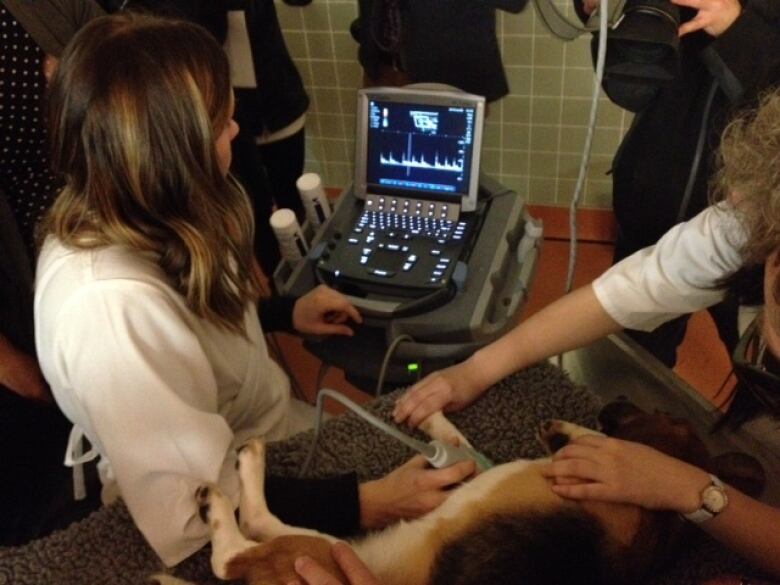University of Saskatchewan researchers developing pet food made from pulse crops
Researchers Lynn Weber and Jaswant Singh get funding from Canada Foundation for Innovation
University of Saskatchewan researchers are working on a healthy food option for your pooch made from pulse crops.
Lynn Weber and Jaswant Singh, of the Western College of Veterinary Medicine, are developing a pet food made from chickpeas, beans and lentils.
The three-year project is trying to determine whether pulses are beneficial to the health of pets.
"We know it's healthier for humans, but is it for pets?" said Weber, an associate professor with the veterinary college.
Funding for pet food
Weber and Singh's research got a boost this morning. Ed Holder, Canada's Minister of State for Science and Technology, announced that their researchreceived $172,000 from the Canada Foundation for Innovation (CFI).

"It seems early results are that it really is beneficial, but this machine will really allow us to really confirm that," Weber said.
The microscope is a powerful tool to help researchers visualize tissue and structures.
"Compared to a standard clinical machine, it's at least 100 times, or maybe as much as 500 timesbetter at seeing the smallest structures possible," she said.
The researchers are working with eight beagles, nine cats and some fish.
Microscope used for other research
The microscope will also be used for other studies, like using vitamin D and lentil hulls to protect against the effects of high-fat diets or tobacco smoke on humans.
Weber and Singh's project was one of four at the U of S to receive a total of $844,000 from the CFI. It's part of $35 million being handed out to 37 universities across the country as part of theCFI's John R. Evans Leaders Fund.












_(720p).jpg)


 OFFICIAL HD MUSIC VIDEO.jpg)
.jpg)



























































































